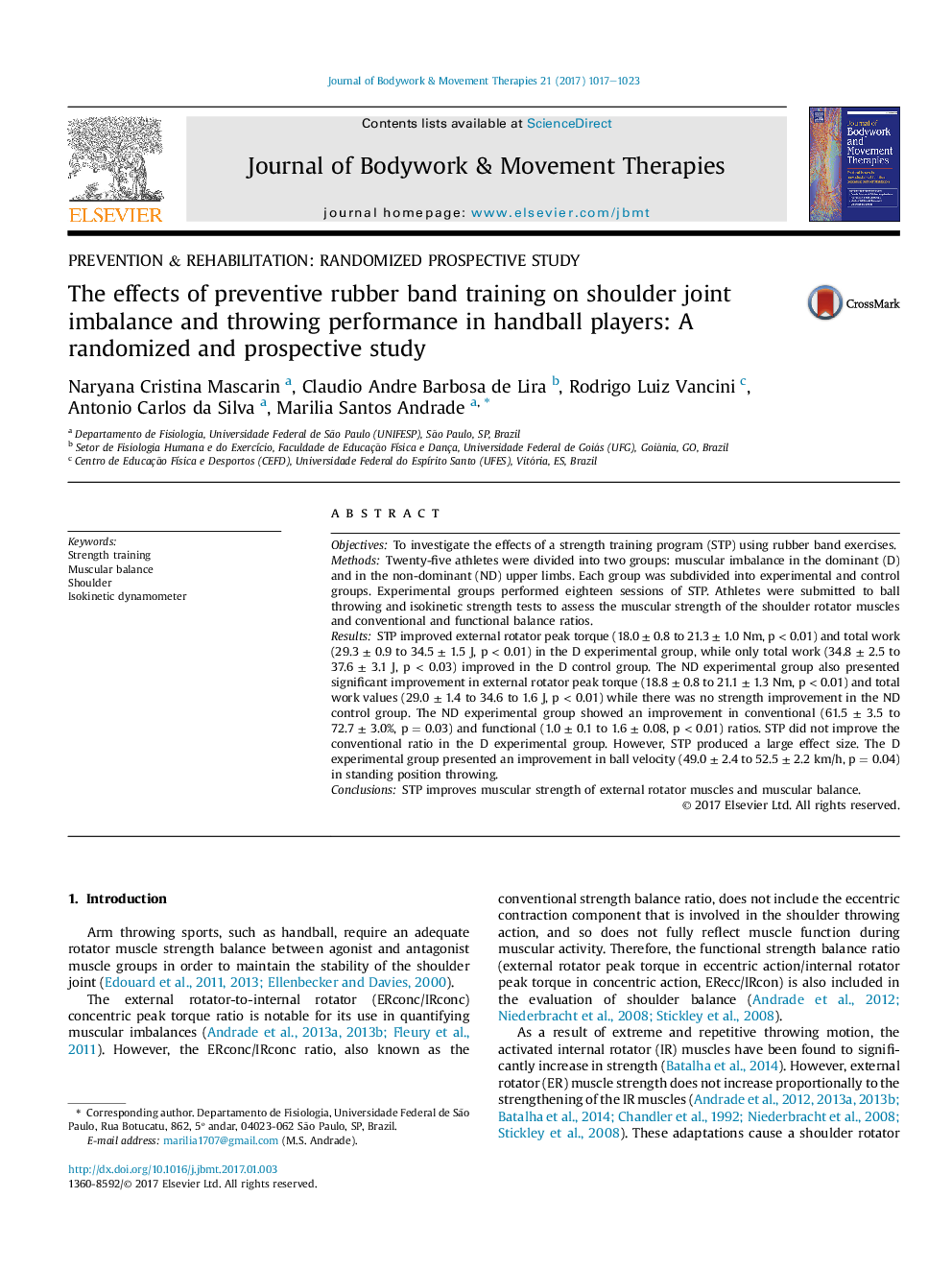| Article ID | Journal | Published Year | Pages | File Type |
|---|---|---|---|---|
| 5563953 | Journal of Bodywork and Movement Therapies | 2017 | 7 Pages |
ObjectivesTo investigate the effects of a strength training program (STP) using rubber band exercises.MethodsTwenty-five athletes were divided into two groups: muscular imbalance in the dominant (D) and in the non-dominant (ND) upper limbs. Each group was subdivided into experimental and control groups. Experimental groups performed eighteen sessions of STP. Athletes were submitted to ball throwing and isokinetic strength tests to assess the muscular strength of the shoulder rotator muscles and conventional and functional balance ratios.ResultsSTP improved external rotator peak torque (18.0 ± 0.8 to 21.3 ± 1.0 Nm, p < 0.01) and total work (29.3 ± 0.9 to 34.5 ± 1.5 J, p < 0.01) in the D experimental group, while only total work (34.8 ± 2.5 to 37.6 ± 3.1 J, p < 0.03) improved in the D control group. The ND experimental group also presented significant improvement in external rotator peak torque (18.8 ± 0.8 to 21.1 ± 1.3 Nm, p < 0.01) and total work values (29.0 ± 1.4 to 34.6 to 1.6 J, p < 0.01) while there was no strength improvement in the ND control group. The ND experimental group showed an improvement in conventional (61.5 ± 3.5 to 72.7 ± 3.0%, p = 0.03) and functional (1.0 ± 0.1 to 1.6 ± 0.08, p < 0.01) ratios. STP did not improve the conventional ratio in the D experimental group. However, STP produced a large effect size. The D experimental group presented an improvement in ball velocity (49.0 ± 2.4 to 52.5 ± 2.2 km/h, p = 0.04) in standing position throwing.ConclusionsSTP improves muscular strength of external rotator muscles and muscular balance.
